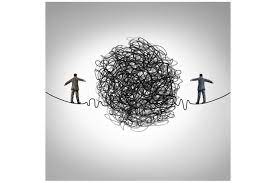If you are a B2B supplier and you can’t believe your clearly-superior product isn’t doing better, the B2C case of Betty Crocker (a General Mills company) is instructive.
The cake maker famously learned a lesson when it debuted a marvel of food engineering: the “just add water and bake” cake mix. Like the makers of many B2B products, General Mills marketers figured their superior technology would win the day.
When sales were extremely disappointing, they decided to get serious about understanding this unexpected customer behavior. A team of psychologists uncovered that cake bakers wanted to feel more ownership of the baking process because of the emotion of “caring”. They wanted to feel worthy of their loved one’s compliments, and felt guilty when they received praise after investing so little work in the process.
The customer’s emotions of caring, guilt and their desire to feel worthy led Betty Crocker to make its process less convenient, requiring that other ingredients be added to the cake mix. Sales soared. What can B2Bs learn from this?
Friction In The Customer Experience Is Often Emotional
The Betty Crocker case points out that friction in marketing often occurs in customers’ heads. Even with B2B buyers.
Back in the day, legions of computer makers were baffled when their own clearly superior machines lost sales to IBM. But in these early days of the Age of Technology, IBM competitors couldn’t overcome the emotional friction of buyers wanting to reduce risk.
“No one ever got fired for buying IBM” was an unofficial tagline. The popular phrase created emotional friction in buyers’ heads about buying newer products, even ones that had better functionality.
Three Tools to Find and Overcome B2B Buyers Emotional Friction
The following three tools below show a logical progression of analyses that can uncover your B2B buyers’ emotional friction points and open up new opportunities for growth. As you will see, however, these tools can and do work synergistically.
Tool #1 — Influencer Maps: You can’t find emotional friction points if you aren’t even focusing on the right customer stakeholders. B2B markets are notoriously messy because of the sheer number of influencers in a sales environment.
An influence map is a tool that makes sense of the chaos by mapping the changing influence dynamics in your industry. Used correctly, it helps you detect industry power shifts before your competitors do.
As an example, an influence map helped a medical device client uncover a stakeholder whose emotional friction was blocking their success. The supplier’s product was proven to be superior to other products in reducing patient pain, improving patient mobility, and reducing instances where patients’ bodies rejected the device.
The one downside was that the device took twice as long to implant than those of competitors. A stakeholder map revealed that an overlooked stakeholder — operating room schedulers — were gaining power due to hospital’s increasing focus on efficiency. And these schedulers had emotional friction.
It turns out that the schedulers were giving doctors less attractive, late-in-the-day operating slots if they were choosing to implant our client’s device. They didn’t want the long operation, especially if it went even longer, to throw off the day’s schedule.
The unattractive time slots were causing surgeons to choose other products. Read on to see how the other two tools were used to turn the situation around.
Tool #2 — Customer Journey Maps: A customer journey map is a visual picture of a customer stakeholder’s experiences before, during, and after buying a product or service. The map recreates what a customer is thinking and doing at each stage of the journey.
They often uncover a roadblock – a friction point — to the success of an offering. For example, Viagra marketers thought that their success in demystifying the doctor-patient erectile dysfunction conversation would create more sales than it did.
Their customer journey analysis revealed that customers were not following up on prescription orders (the “after” part of the customer journey) because they were embarrassed to face the pharmacist. Viagra developed mail-order delivery in discrete packaging to unblock this customer journey emotional friction point.
Similarly, our medical device client’s customer journey revealed that their problem was in the “after” phase of the map. Great “before” discussions with surgeons about the device led to strong “during” phase initial sales.
The follow-up sales were disappointing (the “after” phase.) Customer journey analysis is revealed that the operating room scheduler’s practice of assigning late-day time slots for the product was killing additional sales of the device.
The third tool below reveals how our client unlocked all of this. But you should know that it was the customer journey map that first identified the operating room scheduler as a key stakeholder. The device maker’s original influencer map omitted them. This is an example of the synergistic use of these tools.
Tool #3 – Benefits and Values Ladder: A benefits ladder helps you understand the tangible and emotional needs your target customers are trying to fulfill. These ladders are built by having a formal or informal dialogue with customers, or at least with people who understand customers very well.
If you have some budget funds available, observational research methods (such as ethnographies) are great ways to identify customer’s unspoken desires, issues, emotions and motivations.
These emotional values are often overlooked in B2B marketing. These values are virtually impossible to change — and uncover just the kind of emotional friction we’ve been talking about.
You must first uncover these values/emotional friction points — and then try to work with them instead of trying to change them. This leads to counterintuitive but highly effective strategies.
Working with emotional friction points led Betty Crocker to actually reduce convenience in their customer’s experience instead of trying to change their emotional value of “caring” to “efficiency.” No one wanted to brag about how much time they saved when baking a cake.
Swimming against this emotional tide led many IBM competitors to unsuccessfully tout “cutting-edge performance” when early days computer buyers wanted “reduced risk.”
Addressing “embarrassment” worked for Viagra when they went to the trouble of pioneering home medication delivery. They resisted the temptation to change the appeal to “courage” and have ED interactions not just with their doctor but their pharmacist too. It wouldn’t have worked.
Finally, benefits ladder analysis and addressing emotional friction worked for our medical device company. They realized that the operating room scheduler was several steps removed from the patient. Attempting to change their minds from an “efficiency” mindset to “the right thing to do for patients” wouldn’t have been effective.
Instead, their messaging focused on efficiency-oriented messages like “predictable surgery times” and “eliminate unprofitable re-work” in convincing schedulers to give surgeons more favorable time slots. It was successful.
The underperformance of seemingly-superior products is often rooted in the emotional friction points of buyers. This is true even in B2B markets like pharmaceuticals, technology, and medical devices, as the cases above show.
Armed with the right mindset and these tools, you will be able to do much more than uncover the cause of disappointing results. You’ll also see how to develop sometimes-unconventional strategies that work because they are consistent with how the human buying brain works.
The good thing about effective unconventional strategies is that your competitors aren’t likely employing them. This gives you an edge.

 Tom Spitale
Tom Spitale